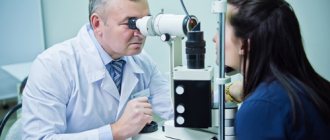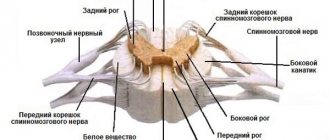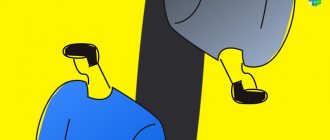Cerebral palsy, or cerebral palsy, refers to a whole group of diseases. These are conditions with impaired motor activity and posture. The onset of the disease is most often caused by a deviation in the formation of the central nervous system or injury. Cerebral palsy can be called the most common cause when a child develops a permanent disability. Statistics indicate the presence of cerebral palsy in approximately twenty people per 10,000 population. Can cerebral palsy be cured? Let's talk about this in the article.
Cerebral palsy is characterized by a whole complex of physical abnormalities, which may also be accompanied by mental disorders. One or more muscles become tight and affect the movement capabilities of the body or part of it. This is expressed in the appearance of reflex movements that cannot be controlled by the person himself. The degree of such deviations can vary: from slight to very severe, almost paralyzing the patient. Some patients have hearing loss and seizures.
Of course, a lot depends on the severity of the disease. But 100% of doctors are convinced that the patient and his loved ones can influence the level of recovery of health. This depends on how well and regularly clinical recommendations and rehabilitation procedures are followed. The Center for Aerospace Medicine used the innovative achievements of science working for the space industry to create equipment that could save or improve the lives of patients with cerebral palsy. We are talking about highly effective rehabilitation equipment .
When parents learn about their child's terrible diagnosis, many are unable to cope with the psychological stress. Our specialists will help families with special needs children learn how to live. Our simulators are designed using advanced technologies and scientific achievements of recent years, so they take into account the severity of the disease, the age of the child and his ability to adapt.
Causes of cerebral palsy
It is known for sure that the cause of cerebral palsy is a brain disorder. And no one will name the exact reason for this violation itself. The problem can appear during pregnancy or childbirth, and it can happen at the very beginning of the baby’s life – up to the age of three.
Why, when the baby is just developing in the belly of the expectant mother, can something go wrong and affect the formation of the most significant and complex organ - the brain? Unfortunately, there are plenty of reasons. Penetration of a dangerous infection into the body of a pregnant woman. Everyone knows that rapid infectious diseases can leave behind many unpleasant consequences. And a pregnant woman is not only exposed to danger, but also cannot always protect the developing
small organism. One of the common causes of congenital cerebral palsy is pathological genes. Heredity can play a bad role here. Well, complications during childbirth, when a healthy baby receives an injury that affects the blood supply or the brain itself, can cause an unpleasant lifelong diagnosis.
Another cause of cerebral palsy in children is prematurity. Babies who have not gone through the entire path of prenatal development with their mother are most susceptible to cerebral hemorrhages. These are intraventricular bleedings that can disrupt brain function. Premature babies are often born with underdeveloped brains. In addition, the white matter of the brain is most often affected by damage, or periventricular leukomalacia, in children born prematurely. In full-term infants, this pathology is very rare.
The brain of a baby between the ages of birth and three years can also be easily damaged. He is not yet able to resist dangerous infections or injuries. Thus, a state of hypoxia or physical trauma can affect the appearance of cerebral palsy syndrome in a child. Another dangerous disease that affects brain activity can be meningitis and its complications.
Causes
Trauma during childbirth or postpartum often causes cerebral palsy
Considering the factors influencing the development of pathology, three main groups are distinguished:
- disturbances during pregnancy;
- injury during labor;
- deviations after childbirth.
The causes of cerebral palsy in newborns can be represented by the following options:
- severe conflict due to different Rhesus in the fetus and mother;
- introduction of infection into the baby’s body with amniotic fluid;
- oxygen starvation of the fetus due to fetoplacental insufficiency;
- hereditary pathologies, genetic mutations;
- injury to the baby during childbirth (rapid process, narrow woman’s pelvis, incorrect positioning of the fetus);
- placental abruption or entanglement of the umbilical cord in the neck of a newborn baby, which causes asphyxia;
- head injury to a newborn after birth;
- severe poisoning of the baby’s body with toxins or medications;
- damage to the child’s body by infection (in the postpartum period).
How to avoid the risks of cerebral palsy during pregnancy?
Cerebral palsy is a common disease. And it is almost always difficult to pinpoint the cause. But medical statistics collected over many years of research have made it possible to identify risk factors that are determined during a woman’s pregnancy. These data made it possible to compile a list of recommendations for expectant mothers that will help minimize the risks of cerebral palsy.
Recommendations for pregnant women to prevent cerebral palsy:
- completely eliminate smoking and any type of alcohol, especially in the early stages of pregnancy, when the main formation of organs and the central nervous system occurs;
- eat well;
- avoid contact with toxic substances;
- Do not miss scheduled doctor visits.
Recommendations for newborns to prevent cerebral palsy:
- do routine vaccinations on time;
- avoid contact of the newborn with infectious patients;
- do not contact someone with meningitis;
- see signs of newborn jaundice in a timely manner;
- Avoid using substances that contain heavy metals.
What are the causes of cerebral palsy during pregnancy?
Infantile cerebral palsy can develop during intrauterine development. The causes of cerebral palsy due to vaginosis lie:
- genetic mutations;
- fetal hypoxia (lack of sourness in the blood and tissues);
- use of hormonal drugs in the early stages of vaginity;
- congenital development of the brain;
- Infectious diseases of the mother during pregnancy;
- sour starvation of the fetus due to placental insufficiency;
- the physiological development of the fetus is disrupted (there is a threat of interruption of gestation and immunological insanity of the fetus and mother).
Symptoms of cerebral palsy
It is clear that instantly diagnosing cerebral palsy in an infant is very problematic. There is no need to talk about impaired motor functions when they are not yet developed. It is inappropriate to say that a child cannot control his movements, because any child does not know how to do this and learns until he is 2–3 years old. As the child grows after one year, an attentive parent or nanny who spends a lot of time with the baby may notice deviations and delays in the development of skills typical for children of this age.
If the degree of brain damage is high, developmental defects will be noticeable immediately after birth.
And yet, there are some signs that may lead parents to think about the possible presence of cerebral palsy syndrome:
- very weak baby cry;
- constant disturbance of swallowing and sucking movements;
- periodic seizures;
- poses that are atypical for a certain age.
You should be alert when the baby is in a very relaxed state, the body seems to be like cotton wool. Or vice versa - hyperextension of great strength, when both arms and legs are scattered to the sides more than in healthy infants.
As the child grows, the pathological symptoms of cerebral palsy become more noticeable, even to the unprofessional eye of parents, so it is important to contact a pediatric neurologist in a timely manner in order to avoid serious complications in the future or to begin treatment as quickly as possible. In addition to the fact that the physical parameters of body development lag behind the age norm, signs appear that signal a problem.
Signs of cerebral palsy in young children:
- Limb hypotrophy. The child cannot fully control the muscles of the arms and legs; accordingly, they are motionless most of the time. The muscles do not develop and become flaccid and soft.
- The child's tactile and pain sensations may be inadequate and pathological. Thus, the pain can be felt many times stronger than in an ordinary person. Problems arise even with normal brushing of teeth or drying with a towel. And tactile associations may be completely incorrect: the patient is not able to distinguish between a hard and soft ball, a rough or smooth surface.
- Irritation of the skin around the mouth. Lack of control of swallowing and salivation provokes the constant presence of saliva in the mouth. This, in turn, causes skin irritation in the area of the mouth, chest and chin.
- Dental diseases. The inability to properly brush your teeth leads to tooth disease and gum inflammation. Children prone to seizures are prescribed medications against this disease. These medications also have an adverse effect on the condition of the gums.
- Injury in accidents. Of course, people who are unable to control their coordination are more likely than others to fall, hit door frames, pieces of furniture, etc. The occurrence of unexpected convulsions also provokes injuries from surrounding objects.
- Children and adults with cerebral palsy belong to the group of frequently ill patients. Their bodies are poorly resistant to somatic and infectious diseases. In addition, in particularly severe forms of cerebral palsy, even a cough can become deadly. While eating, a child who is unable to swallow normally may choke. Food particles entering the trachea provoke inflammation and pneumonia.
- All patients suffering from cerebral palsy have problems with poor posture and physical movements of the body. The problem with childhood is that this sign is difficult to identify in infants. And as the child grows and his activity increases, a brain injury received, for example, during childbirth, may worsen. The condition of this vital organ can change and complicate the development of cerebral palsy. That is why it is so important to detect a dangerous disease as early as possible and begin treatment and rehabilitation measures.
Features of the disease
Cerebral palsy is a pathology caused by damage to parts of the brain. As a result of the disorder, problems arise with coordination of movements, difficulties with hearing, speech, and vision. The infant exhibits mental retardation and may even experience convulsions.
Cerebral palsy appears in newborns more often than in children after a year of life. A feature of the pathology is that the symptoms of the disease do not progress. The damage to parts of the brain that has occurred will appear less in the future if you pay attention to the condition of the baby in time. If cerebral palsy is detected early in a child, then timely massage therapy and physical therapy will reduce movement disorders.
Forms of cerebral palsy
Patients with the same diagnosis – cerebral palsy – behave differently, they can have completely different levels of social activity and different quality of life, and their dependence on outside help can differ significantly. This depends on various factors:
- type of disease;
- severity of the disease and degree of brain damage;
- level of mental development;
- the presence of concomitant pathologies.
The concept of “type of cerebral palsy” defines a child’s motor disorders. There are spastic and complete cerebral palsy.
How to cope with adversity?
For parents, the diagnosis of cerebral palsy in their child is considered a serious death sentence. But a properly selected treatment system will do its job. Together, therapy will give the child a chance to become a full-fledged member of society.
To correct muscle weakness, therapeutic exercises, massage, and acupuncture are selected. Therapy with the help of horses is effective - hippotherapy.
Together with drug treatment and physical methods, complete correction of a child with cerebral palsy is possible. The signs of paralysis will not go away completely, but the patient will feel the taste of life and learn to overcome difficulties physically and emotionally.
And the main role here is played by early recognition of the disease and the first signs of infantile paralysis.
Spastic type
This type of cerebral palsy is the most common. It is characterized by the fact that only part of the body is subject to paralysis, but not the entire body. The pathology can be in only one arm or leg, the right or left half of the body, only the legs or part of the face. All options are individual. Experts define this condition as a stiff muscle that cannot relax. These may be the muscles responsible for swallowing, flexion and extension of limbs, and speech. Therefore, patients with spastic cerebral palsy walk strangely and with difficulty, they leak saliva, and their speech is slow and slurred.
Depending on how damaged the body is, the patient’s quality of life is determined. If both legs are paralyzed, the person may end up in a wheelchair. At the same time, he is able to speak, is mentally developed in accordance with his age, is able to study and even work.
When motor functions are limited in a small area, a patient with cerebral palsy can generally cope for the most part without assistance. In some cases, minor injuries can be treated. Or “smart” devices make it much easier to perform normal life functions. It is for these purposes that we have developed and created equipment that can bring the quality of life of a patient with cerebral palsy closer to the level of a healthy person.
Depending on the extent of damage to the body, several forms of spastic cerebral palsy :
- hemiplegia is a pathological condition of one leg and arm, only the right or only the left side of the body;
- paraplegia (diplegia) – impairment of the functioning of both upper or both lower extremities;
- monoplegia - paralysis of only one limb;
- quadriplegia is the most serious condition in which there is paralysis of all four limbs and, as a rule, the spine is affected (hence the swallowing disorder);
- Triplegia – three limbs are “faulty”.
How to recognize the disease?
In children with cerebral palsy, abnormalities can be detected quickly if the baby actively moves the limbs on only one side of the body. In addition, the child cannot turn his head or hold it independently. Depending on the age of the baby, the presence of paralysis is determined:
- At two months old, the baby's legs cross with scissors and are stiff. Increased muscle tone in the arms and trembling of the limbs are noted. The baby finds it difficult to suck. He lacks characteristic reflexes. Constantly nodding the head or freezing in one position is typical for a child with cerebral palsy.
- At 3 months of life, the disease often manifests itself as excessive lethargy or irritability. Head movements are poorly controlled by the baby. When checking the palm-oral reflex, when the child opens his mouth while pressing the palm, its absence is noted. Also, when a healthy child is placed on his feet, he rests on his entire foot. A sick baby stands on his toes. During this period, muscle hypertonicity is noticed on one side of the body and a lack of tone on the other.
- At 4–5 months, a newborn with cerebral palsy moves one arm and holds the other to the body. The patient's movements are awkward. Even on the face, muscle asymmetry is visible. Often a child suffers from strabismus.
- From 6 and 7 months, the child is unable to roll over on his own. The control of raising the head continues to decline.
- At 8 months, the baby is noted to be behind in development compared to his peers: he does not sit independently and moves with difficulty. At 10 months, deviations from the norm become more obvious.
The older the child gets, the more pronounced the problems in his development become. And here not only motor function suffers, but also mental activity.
More often, the presence of paralysis can be determined by the absence of characteristic reflexes.
Non-spastic, or full type
This type of cerebral palsy includes conditions in which the patient is unable to live independently. Here we are talking not only about physical, but also about mental disabilities. This group of diseases includes both severe forms of spastic cerebral palsy and choreoathetoid. The following types of non-spastic cerebral palsy are distinguished:
- dyskinetic - a condition in which there is an increase in muscle tone, convulsions or slow movements that are not controlled by the patient are possible;
- hyperkinetic type - relaxation is observed during sleep with constant twitching, especially of the face (similar to grimaces), while awake this affects the inability to swallow food;
- ataxic type - rare - motor abilities of the whole body are impaired, involuntary uncontrolled movements involve the arms, legs and torso;
- mixed type - there are cases in which the patient has symptoms of more than one type of cerebral palsy (for example, if both legs are affected - diplegia - and uncontrolled facial expressions - dyskinetic cerebral palsy).
It is not possible to talk about what long-term motor abnormalities and the severity of convulsive seizures the patient will suffer in children under three years of age. Yes, and mental development disorders can also be identified only at school, when the child should already be able to fully use his intellectual abilities. With any form of the full type of cerebral palsy, there are deviations in mental development, even if they are very small. This is due to the inability to use the physical functions of the body to understand the world and master certain skills and abilities.
Another consequence of the presence of cerebral palsy - hearing loss - is difficult to recognize in infants, but mandatory audiometry is provided in the maternity hospital, which allows for timely detection of this deviation. However, at a younger age, an attentive adult can understand that in some situations the child does not respond to quiet sounds.
Even physically healthy people are susceptible to various psychological problems. But for patients with cerebral palsy it is much more difficult. They look different from everyone else, they move awkwardly and not very beautifully, they are not able to speak correctly. Therefore, more than anyone else, they need understanding and correct attitude from others.
The life expectancy of people with cerebral palsy can be very normal. It depends on the severity, shape and rehabilitation efforts applied. Special compensatory equipment can provide serious assistance in relaxing paralyzed muscles and developing partially or completely inactive muscles. Improving physical capabilities greatly affects mental development - the quality of life and its duration increase. Rehabilitation of children with cerebral palsy can be very successful if you have good equipment, an integrated approach, unlimited patience and perseverance of loved ones.
Classification
Child with cerebral palsy
The distribution into individual forms of the disease is related to the nature and prevalence of motor disorders, namely:
- spasticity - muscle hypertonicity is present;
- athetosis – regular involuntary movements;
- ataxia - lack of balance, resulting in frequent falls;
- rigidity - muscle density, tension, resistance to passive movements;
- trembling of limbs and tremor.
Based on the localization of the pathology, the following forms are distinguished:
- monoplegic - the disease manifests itself in only one limb;
- hemiplegic - the lesion is observed on one side of the body, including the limbs;
- diplegic - the disease manifests itself as a disorder in both lower or upper extremities;
- quadriplegic - all limbs, both upper and lower, are partially or completely affected.
The following types of this disease are also distinguished.
- Spastic diplegia. It is observed in 40% of all cases. The part of the brain responsible for limb movement is affected. The child has paralysis of the legs.
- Double hemiplegia. The most severe type of cerebral palsy. Damage to the cerebral hemispheres is observed, which causes rigidity of the muscular system. Such a baby will not be able to stand, hold his head up, sit or move adequately.
- Hemiparetic form. The disease affects only one hemisphere of the brain. Characterized by paresis of the limbs on only one side of the body.
- Hyperkinetic form. Involuntary movements are observed due to damage to subcortical structures.
- Atonic-astatic form. Develops if the cerebellum is affected. Characterized by muscle atony and impaired coordination of movements.
Diagnosis of cerebral palsy
Diagnosis in children of the first years of life consists mainly of careful observation of the child’s motor activity. Even healthy children develop differently, begin to walk at different ages, hold a spoon, speak... Therefore, some delays in mastering these skills can only indicate an individual development path. To diagnose cerebral palsy, if doubts arise, both laboratory and instrumental methods are used.
The set of diagnostic measures usually includes:
- Collecting detailed information about the baby’s medical history, starting from pregnancy and even before conception - the characteristics of family health. It happens that the parents themselves provide some information, or the kindergarten staff notices something.
- Special physical examination. Pediatric doctors can, with constant observation, determine the “normality” of a newborn’s reflexes. Other parameters are also assessed: hearing, posture, vision, muscle function.
- Analyzes based on certain parameters also help to establish an accurate diagnosis.
- MRI (magnetic resonance imaging) can identify significant brain pathologies.
If the sad diagnosis is nevertheless confirmed, the research does not end. Cerebral palsy is often accompanied by other diseases.
Many pediatric patients must undergo repeated examinations. This may include an x-ray to detect hip dislocations caused by increased activity and weight of the child. As a rule, between the ages of two and five years, children with cerebral palsy undergo several such scans. X-rays are also prescribed if indicated if the patient has pain in the hip area, since dislocations in this area are typical for patients with cerebral palsy. In addition, x-rays help identify spinal deformities.
As the child grows, the doctor and relatives observe his gait and posture. In cases of deterioration of these physical indicators, a repeat image may be prescribed.
The latest computer equipment facilitates a qualitative study of child motor impairments and diagnosis of the nature of motor pathology. The biomechanical hardware and software complex “Video Analysis of Movements,” developed and created by specialists from the Center for Aerospace Medicine, is capable of literally “seeing” all a person’s muscles and understanding how correctly they function. Since with this examination method the patient is not exposed to physical contact with any devices, his movements remain as natural as possible. Accordingly, the diagnostic picture is reliable, without distortion. The data on the average “correct” body movements entered into the computer program makes it possible to determine the degree of deviation of the motor functions being examined from the conventional norm. Such highly accurate and painless comprehensive diagnostics allows us to most likely develop a treatment strategy.
The use of a hardware-software complex is especially valuable in prescribing treatment for patients who have reached a plateau in their rehabilitation. When there is no improvement, it is important to understand in which direction you need to move forward.
Comparative periodic analysis using this equipment will help evaluate the chosen treatment and determine its effectiveness. Perhaps surgery will be recommended or the exercise routine may simply be changed.
Diagnostics
The diagnosis begins with examining the child, checking his reflexes and muscle tone. The child's movements will differ from the normal movements of peers.
If a sign of cerebral palsy is present, then consultation with a neuropsychiatrist is required. It is possible to differentiate the diagnosis from similar disorders by using diagnostic methods such as brain tomography and ultrasound examination of a small patient.
An accurate diagnosis of cerebral palsy in newborns is made by specialists who select ways to correct the baby’s development.
To make a diagnosis, the pediatrician must:
- conduct an anamnestic analysis, focusing on the course of the mother’s pregnancy, the peculiarities of the birth of the baby;
- examine the baby to check his basic reflexes;
- write out a referral for tests to determine the causes of the pathology.
Therapy for infantile paralysis will be successful, and the baby will be able to live happily ever after if timely measures are taken to rehabilitate the child.
Treatment of cerebral palsy
Unfortunately, cerebral palsy is incurable. However, various means of rehabilitation and the use of many treatment methods help reduce the degree of motor problems and other abnormalities and significantly improve the quality of life of a person with cerebral palsy. If a brain injury has occurred, it will not grow or progress - it has already had its destructive effect.
But the inferior physical condition of the body can worsen if you do not fight to improve its functioning. The child grows, his body changes, hormonal changes occur - all this can have both negative and positive effects on his general condition.
Even treatment for cerebral palsy in adults is possible. After all, if a part of the body is under the influence of increased tension or uncontrollable spasms, the rest of the body is able to function normally and can compensate for the movements of the affected areas. And compensation equipment will help make unruly parts of the body work correctly. Thus, simulators for cerebral palsy practically put people on their feet and teach them to walk again.
Main symptoms
You can detect the disease by knowing the signs of infantile paralysis. Symptoms of cerebral palsy in children under one year of age are associated with paralysis and muscle weakness, involuntary movements, and lack of coordination.
The child does not have a fold between the buttocks, one side of the body is asymmetrical in relation to the other. In newborn infantile paralysis, the muscles are either relaxed or tense and twitching. And the child’s movements are unnatural and chaotic. In addition, anxiety is felt in the baby’s behavior and loss of appetite.
Paralysis in an older child can be determined more quickly. The disease is diagnosed by spinal curvature and hip dysfunction.
Start of treatment
Cerebral palsy is not a death sentence. This is simply a feature of the functioning of the body. If a child is diagnosed with this, parents will have to learn to live with him and get the best out of life that is possible. The treatment will be lifelong. It should become part of the daily routine of the patient and his loved ones. The most effective method is physical therapy. Only constant and competent exercises can make unruly muscles work and prevent those that are most difficult to control from atrophying.
One of the most effective and popular means of proprioceptive dynamic correction is a therapeutic suit. Such suits were invented to develop motor skills in astronauts in zero gravity conditions. Later they began to use it as a highly effective means of rehabilitation of patients with cerebral palsy. They are suitable for people of any age, build, and degree of pathology.
The Regent therapeutic suit helps to actively restore walking skills for adults and children. It will not allow weakened, “lazy” and “disobedient” muscles to control human movements. The design allows you to set the desired angles in the joints to form the correct position of the limbs. The costume is affordable and should be in every family where there is a person with cerebral palsy. It is very convenient that the suit can “grow” with the child. Specialists from the Aviation Medicine Center will individually select the required configuration and teach you how to use this smart assistant.
Patients with lower extremity injuries will benefit from mechanical therapy using a plantar weight-bearing simulator. It looks like shoes that are connected to a device. The Corvit device, created by our center, does not have any negative side effects, is absolutely safe and easy to use. It helps restore the balance of strength between the flexor and extensor muscles, teach walking and maintain body coordination.
Drug therapy also exists. Some medications help reduce the symptoms of cerebral palsy and prevent the condition from getting worse. The most obvious treatment here is the use of antispasmodics and muscle relaxants. They relax cramped muscles and increase motor capabilities. A number of anticholinergic medications are designed to reduce drooling and improve movement of the arms and legs. If the patient has seizures, anticonvulsant medications are used as symptomatic medications.
Treatment
Cerebral palsy is an incurable disease. But a variety of treatment methods help patients with cerebral palsy to minimize motor and other disorders and, thus, improve their quality of life. The brain injury or other factors that lead to cerebral palsy do not progress, but new symptoms may appear or progress as the child grows and develops.
Initial (initial) treatment
Exercise therapy is an important part of treatment that begins soon after a child is diagnosed and often continues throughout his or her life. This type of treatment may also be prescribed before diagnosis, depending on the child's symptoms.
Medications can help treat some of the symptoms of cerebral palsy and prevent complications. For example, antispasmodics and muscle relaxants help relax tight (spastic) muscles and increase range of motion. Anticholinergics can help improve limb movement or reduce drooling. Other medications may be used as symptomatic treatment (eg, anticonvulsants for seizures)
Permanent treatment
Permanent treatment for cerebral palsy (CP) focuses on continuing and adjusting existing treatment and adding new treatments as needed. Permanent treatment for cerebral palsy may include:
- Exercise therapy that can help a child become as mobile as possible. It may also help prevent the need for surgery. If the child has undergone surgical treatment, then intensive exercise therapy may be necessary for 6 months or more. Drug treatment must be constantly monitored in order to avoid possible side effects of drugs.
- Orthopedic surgery (for muscles, tendons, and joints) or dorsal rhizotomy (excision of nerves of damaged limbs), in the presence of severe problems with bones and muscles, ligaments, and tendons.
- Special orthopedic devices (braces, splints, orthoses).
- Behavioral therapy, in which a psychologist helps a child find ways to communicate with peers and this is also part of the treatment.
- Massage and manual therapy can also be used in the treatment of both the main symptoms of cerebral palsy and complications associated with impaired biomechanics of movement.
- Social adaptation. Modern technologies (computers) have made it possible to employ many patients with consequences of cerebral palsy.
How is it possible to diagnose cerebral palsy during pregnancy?
Diagnosis of cerebral palsy during pregnancy is impossible. It is also possible to identify illnesses that can provoke the development of cerebral palsy (for example, pathological vaginity or fetal hypoxia).
To prevent the development of cerebral palsy during the intrauterine development of a child, a woman during pregnancy, it is necessary to undergo regular medical examinations, perform all obligatory tests and fastening, eat properly, and maintain a sleep schedule and lead a healthy way of life. In addition, any illness, whether infectious or chronic, should be treated immediately.
Cerebral palsy - the main causes of development
The causes of the disease in the vast majority of cases are provoked by complications during pregnancy and pathologies in the first weeks of the baby’s life. The causes of cerebral palsy primarily include severe illnesses and pathological conditions that a woman suffered during pregnancy. The first group includes various infectious diseases that lead to intrauterine infection of the fetus. They are especially dangerous during the formation of brain structures.
The second group of reasons that provoke morphological and structural changes in the fetal cerebral cortex during pregnancy include traumatic brain injuries, falls, blows with the risk of brain injury in the child.
The main causes include the following factors:
- Prematurity and, as a consequence, underdevelopment of the brain;
- Chronic fetal hypoxia, causing oxygen starvation of the brain;
- Severe form of toxicosis;
- Severe infectious diseases;
- Lack of vitamins during intrauterine development;
- Severe chronic systemic diseases of the mother;
- Incompatibility of the blood of mother and fetus by Rh factor or group;
- Genetic predisposition (hereditary factor);
- Poisoning with toxic substances, heavy metals, medications.
The causes of postpartum brain tissue damage are most often associated with severe, protracted labor, birth injuries, asphyxia and infection of the baby in the first days of his life.
Late residual stages of cerebral palsy - symptoms
Late stages of cerebral palsy are observed in older children, starting from 3 years. Based on already formed disorders, deformations, limited mobility and stiffness of joints, spasticity and pathological degeneration of muscle tissue, static disorders are established. Their consequence is paralytic and hyperkinetic syndromes.
Late symptoms of cerebral palsy include:
- Skeletal deformities. This type of disorder is observed in children with a spastic form of cerebral palsy. Due to improper movement and imbalance of the muscles, the process of bone formation is pathologically altered. This manifests itself in the form of curvatures, thickening of bones and joints.
- Joint contracture. Stiffness, deformation and pathological changes in joint tissues are caused by inadequate load distribution. In some cases, certain joints atrophy and lose mobility due to impaired muscle tone (myogenic contractures).
- Athetosis. Constant uncontrollable wriggling worm-like movements of the limbs on one or both sides, leading to an unnatural position and deformation (of the hands, feet).
- Ataxia. Characteristic coordination disorders and inability to maintain static or motor balance.
- Pathologies of muscle tone of varying severity. With reduced muscle tone (hypotonia), weakness and sluggishness of movements are observed. With increased tone (hypertonicity) - spasms, convulsions, tremors.
- Hyperkinesis. Involuntary, uncontrollable muscle contractions that cause abnormal movements of certain parts of the body - arms, legs, face.
- Maxillofacial deformities, dentition disorders. They arise as one of the forms of deformation of the skeletal bones of the skull and develop as a result of dysfunction of the facial muscles and other secondary factors of cerebral palsy.
- Delayed mental and mental development. It can manifest itself in various forms depending on the type and severity of damage to brain tissue - disturbance of spatial concepts, disorders of the emotional-volitional sphere, difficulty concentrating and switching attention, low memory capacity, lack of interest and motivation for learning.
In addition to the signs described above, it is important to note disturbances in visual functions (strabismus, optic nerve atrophy, myopia), hearing and speech development. In severe forms, functional disturbances in the processes of urination and bowel movements are also possible.











